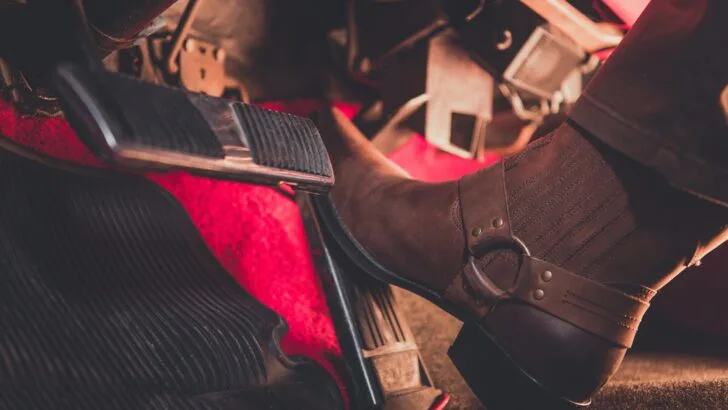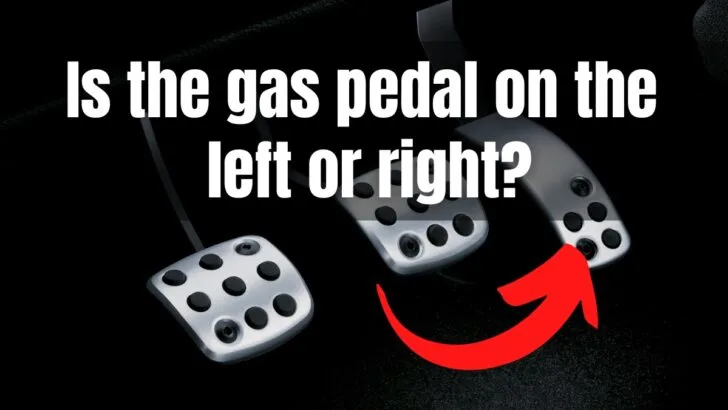Regardless of the automation level and driver assistance features in modern-day vehicles, some common control mechanisms that have stood the test of time are the pedals.
In addition to the steering wheel, the gas and brake pedals grant you greater control over your vehicle.
However, you may have heard of the different vehicle configurations depending on the make and country of origin of the car. Is the gas pedal always on the right? What about gas pedals in manual transmission vehicles?
The gas pedal is almost always on the right side of the driver’s position. Regardless of whether you drive on the right- or left-hand side of the road, the brake pedal will always be on the left of the gas pedal. In manual transmission vehicles, the left-most pedal is the clutch pedal.
However, there are a few exceptions that you should know. Read on to find out.
Is the Gas Pedal Always on the Right?
Not always. Some vehicles have the gas pedal on the left and the brake on the right. For instance, you might require a different way to use the gas and brake if a stroke has affected your ability to utilize your right leg, ankle, and foot. It is especially true if you also have problems with your right hand.
You can also face this obstacle if you have lost a limb or foot, or use a prosthetic. In essence, you could need some adaptive equipment if your right foot is injured or has a condition that interferes with its regular functioning.
Honda has a pedal layout for people with disabilities, with the accelerator and brake pedals operated with the left foot.
Additionally, welfare vehicles designed for people with right-foot impaired mobility allow for both the gas and brake pedals to be operated by hand.
How a Left Foot Gas Pedal Works
Drivers with limited use of their right leg can operate the brake and accelerator with the left foot thanks to left foot accelerator (LFA) pedals.
A left-foot accelerator is essentially a fairly straightforward mechanism that relocates the gas pedal’s control to the left of the brake, making it simpler to operate the vehicle with just your left foot.
You can drive a car with either your right or left foot thanks to an extra accelerator pedal installed to the left of the brake and two accelerator pedals hinged to flip up and down.
Is the Gas Pedal on the Left or Right in Europe?
Car pedals are universal. The gas pedal will always be on the right, regardless of location. Furthermore, the layout of the transmission, clutch, and gas pedals in Europe are the same as they are in North America.
It may be confusing, but in Europe, it is more common for cars to have a manual (stick) gearbox and three pedals (left to right: clutch, brake, and accelerator/throttle). For this reason, some people drive on the left (a majority of former British colonies).
On the left side driving, you’ll step on the clutch and use your right foot to brake and accelerate, or do everything with your right foot in an automatic car.
Why Is the Gas Pedal on the Right?
All cars have the gas pedal on the right, regardless of whether you drive a left- or right-hand driven vehicle. The reason is that most drivers are right-handed and will generally use the right foot to accelerate and brake.

In manual cars, primarily found in Europe, the drivers will use the left foot exclusively to depress the clutch pedal when shifting gears.
In automatic transmission vehicles, most training organizations recommend using the right foot solely for driving, while you place the left foot on the left foot support.
But what if you prefer to use the left foot for braking and the right for acceleration?
Can I Use the Left Foot Braking Technique?
No legislation states that you cannot use your left foot on the brake pedal and the right on the gas pedal. In fact, most professional race drivers use this technique to reduce the time spent shifting the right foot between the two pedals.
However, like most training organizations, we don’t recommend the method for everyday driving.
When an impending danger results in a circumstance that necessitates forceful braking, you are better off shifting your right foot onto the brake pedal.
Additionally, you’ll reliably push the brake pedal further to slow down while supporting yourself with the left foot firmly in position on the left foot support. Now imagine a scenario whereby you have the left foot on the brake pedal and the right one on the gas pedal.
Anyone encountering an unexpected road incident tends to react quickly. Suppose you position both feet over the accelerator and brake pedals.
In that case, studies show that a common reaction is to leap or push both simultaneously, causing your car to both accelerate and brake.
Depending on whatever control is the most powerful, your vehicle will either stop or continue to move. In any event, it will take more time for the car to stop.
Final Remarks on Where the Gas Pedal Is Located
No legislation prevents you from shifting your gas pedal to the left. However, this is dangerous, and you shouldn’t reconfigure your vehicle’s pedals, especially if more than one person drives it.
Most manufacturers and driver training organizations use the ABC (accelerator, brake, clutch) configuration, counting from right to left.
Consequently, most drivers prefer the right-most pedal as the accelerator, the middle one as the brake, and the left-most (if present) as the clutch pedal.
Sources
https://blog.ingenie.com/young-drivers-guide/controlling-your-car
https://www.quora.com/In-Europe-do-they-still-use-their-right-foot-for-the-gas-and-brake-pedal
